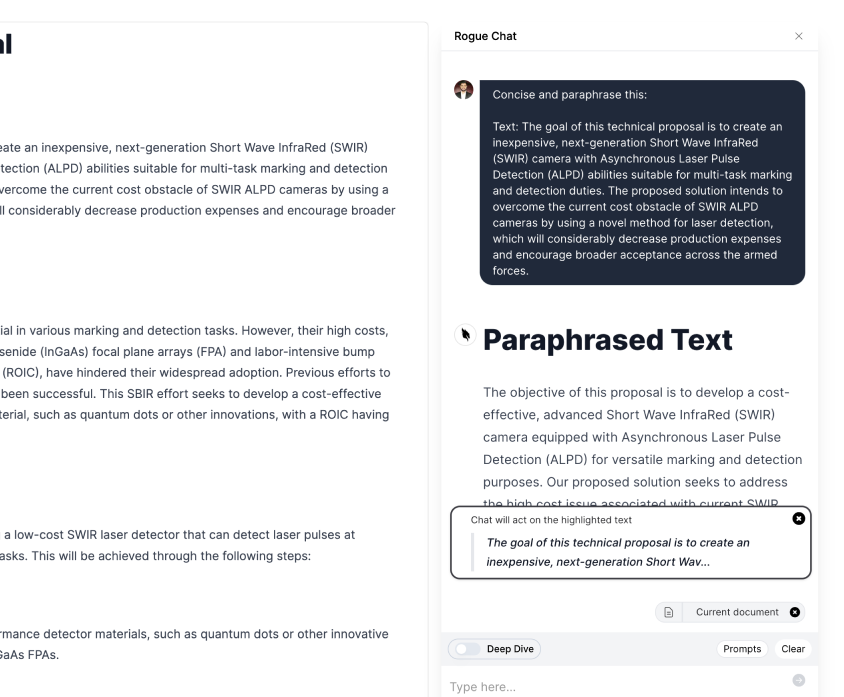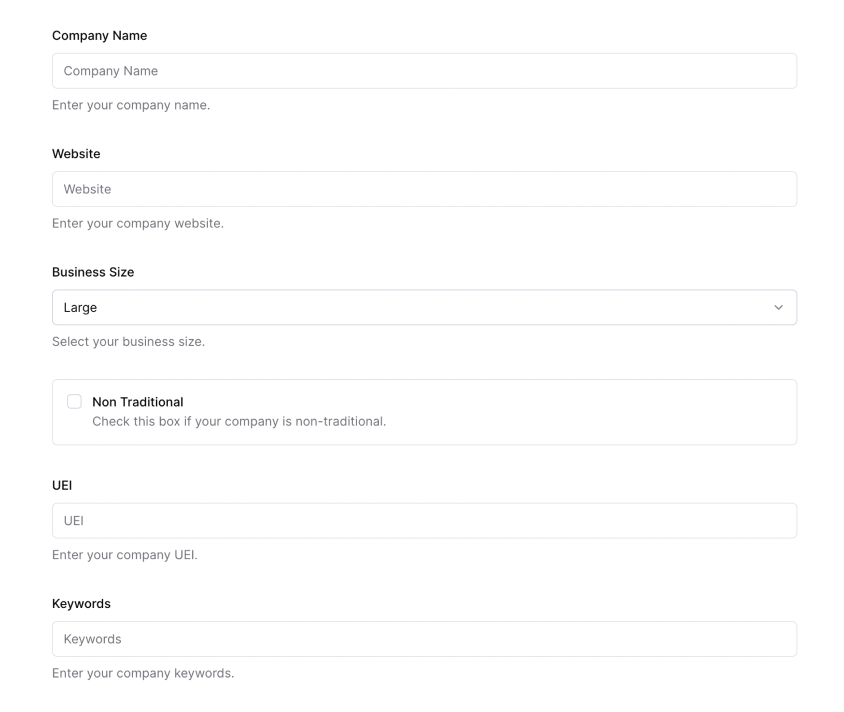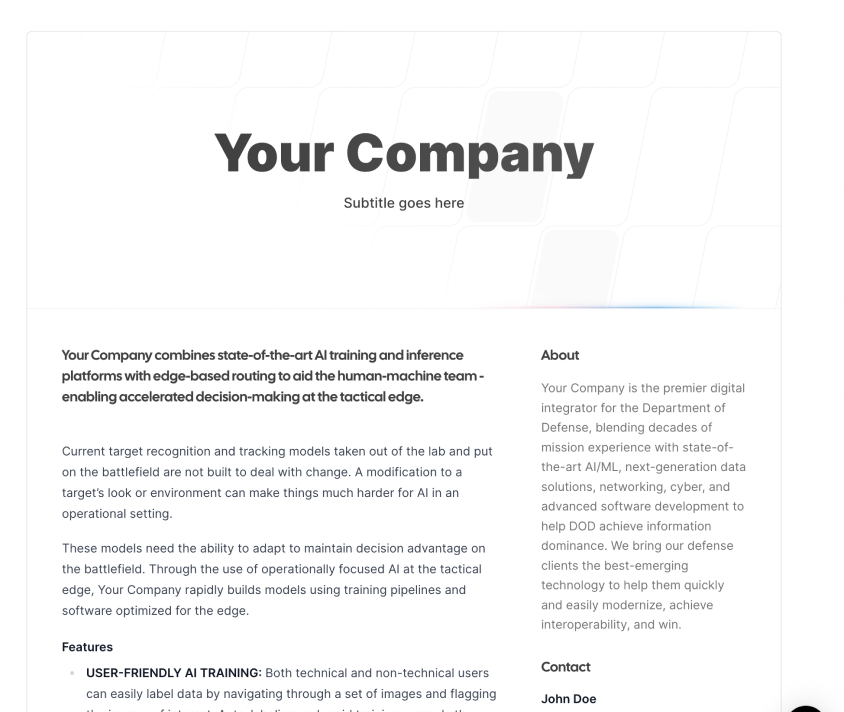
Module 4.a: Prompt Engineering for GovCon
I. Introduction
Welcome to THE introductory prompt engineering guide, tailored specifically for hardworking government contractors seeking to leverage the power of advanced AI models like GPT-4, Anthropic Claude2, Bing Chat, and Bard for their daily tasks. These AI models have revolutionized the way we work, enabling us to automate processes, increase efficiency, and make data-driven decisions.
III. Understanding Prompts and their Components
In the context of these AI models, a prompt is an instruction or input that guides the AI on what kind of text to generate. A well-crafted prompt consists of four essential components:
- Context: This can include anything from a few words to a few paragraphs of text that provides the model with information about the topic or task at hand. For example, the context for a prompt to write a trip report could include the purpose of a trip report, the destination and dates of the trip, and some notes about the trip.
- Task or question: This tells the model what you want it to do. It should be clear and concise, and it should be specific enough that the model knows what you are asking for. For example, the task for a prompt to write a trip report can be as simple as "Write a trip report."
- Constraints or limitations: These are any restrictions that you want to place on the model's output. For example, you might want the model to write a report that is no more than 500 words long (approximately one page), and you probably want it to use follow a specific outline.
- Additional guidance: This is any additional information that you want to provide to the model. This could include examples of the type of output you are looking for, or it could be instructions on how to format the output.
- Examples: This can include examples of the type of output you are looking for. For example, if you want the model to write a trip report using your writing style, you could provide an example of your last report.
- Instructions: This can include instructions on how to format the output. For example, you might want the model to write a document in a specific style, or you might want it to include a specific outline structure.
- Style: This can include the tone, voice, or genre of the output. For example, you might want the model to write a report in a very formal form if it is being submitted to a government customer, or you might want it to write in the style of a business executive if it is for internal consumption.
- Mood: This can include the emotional tone of the output. For example, you might want the model to write the report in a positive tone if it was a worthwhile trip, or in a negative tone if it was a huge waste of time.
- Setting: This can include the time period, location, or environment of the output, but for our purposes it is more likely your company, your particular industry segment, etc. For example, you might want the model to write specifically about your company as an IT Services company rather than system engineering and integration company. This nuance will add authenticity to the overall generation.
- Characters: This can include specific people to include in the report and their roles. For example, you might want the model to write about the other personnel that went on the trip, who they visited, and the roles each participant played in the trip.
- Narrative: This can include the plot, conflict, and resolution of the output. For example, you might want the model to write a trip report that tells the background and context.
Additionally for an effective GPT prompt:
- Be as specific as possible. The more specific you are, the better the model will be able to understand what you want.
- Use keywords. When possible, use keywords that are related to the topic or task at hand. This will help the model to focus on the right information.
- Avoid using jargon or technical terms. The model may not be familiar with these terms, and it could lead to inaccurate or misleading results.
- Be patient. It may take some trial and error to find the right prompt that gets the results you want.
IV. For Example...
Here’s a guide and 5 fairly well-crafted prompts for a GPT to generate a government contract monthly status report outline for IT services:
- Context: This provides the model with information about the topic or task at hand. It can be a few sentences or a paragraph, and it should be as specific as possible. For example, the context could include the following:
- The name of the government contract
- The type of IT services being provided
- The specific tasks that have been completed in the month
- The milestones that have been met
- The challenges that have been encountered
- The goals for the next month
- Task or question: This tells the model what you want it to do. It should be clear and concise, and it should be specific enough that the model knows what you are asking for. For example, the task could be "Generate a monthly status report outline for the government contract for IT services."
- Constraints or limitations: These are any restrictions that you want to place on the model's output. For example, you might want the report to be no more than 10 pages long, or you might want it to be formatted in a specific way.
- Examples: This can include examples of the type of output you are looking for. For example, you could provide examples of previous monthly status reports for the government contract.
- Instructions: This can include instructions on how to format the output. For example, you might want the report to include a table of contents, or you might want it to include specific images or graphs.
Here are the 5 prompts:
- Prompt 1: Generate a monthly status report outline for the government contract for IT services. The report should be no more than 10 pages long and should be formatted in a professional manner. The report should include the following sections:
- Introduction
- Summary of activities
- Challenges and risks
- Goals for the next month
- Conclusion
- Prompt 2: Provide an outline for a monthly status report for the government contract for IT services. The report should include the following sections:
- Summary of activities completed in the month
- Milestones met
- Challenges encountered
- Goals for the next month
- Any other relevant information
- Prompt 3: Write a monthly status report outline for the government contract for IT services. The report should be clear, concise, and easy to read. It should include the following sections:
- Introduction
- Summary of activities
- Challenges and risks
- Goals for the next month
- Contact information
- Prompt 4: Create a monthly status report outline for the government contract for IT services. The report should be tailored to the specific needs of the government agency. It should include the following sections:
- Executive summary
- Key findings
- Recommendations
- Appendices
- Prompt 5: Develop a monthly status report outline for the government contract for IT services. The report should be based on the latest industry standards and best practices. It should include the following sections:
- Introduction
- Scope of work
- Deliverables
- Timeline
- Budget
- Risks and mitigation strategies
IV. Importance of Good Prompts
The quality of your prompts directly impacts the quality of your AI's response. A poorly crafted prompt may lead to irrelevant or inaccurate responses, while a well-crafted prompt can yield highly valuable and useful results.
Specificity, clarity, and relevance play crucial roles in crafting high-quality prompts. Being specific and clear in your instructions helps the AI understand exactly what you want. Providing relevant context helps it generate more appropriate and accurate responses.
VI. How to Use these Prompts in Daily Government Contracting Tasks
AI can automate many routine tasks involved in government contracting work. For instance:
- Report Generation: You can ask GPT-4 to summarize bid activities, market trends, or contract performance metrics.
- Contract Review: You can ask Bing Chat to summarize key points in a contract document.
- Bid Preparation: You can use Bard to draft bid proposals based on guidelines you provide.
We'll get into this in minute detail in coming modules, this is just a general overview to get you started.
VII. Bottom Line
Crafting high-quality prompts for GPT-4, Anthropic Claude2, Bing Chat, and Bard can greatly enhance your productivity as a government contractor. As these AI technologies continue to evolve, so too must our ability to effectively communicate with them through well-crafted prompts. Remember: practice makes perfect!
VIII. Practical Exercise
- Go through section 6 above, but vary the input prompts a bit, modify the different sections of the prompt
- Try at least two different variations and drop them in a comment in the group
- Give feedback below
GovCon GPT Masterclass
31 lessons
Sign up for Rogue today!
Get started with Rogue and experience the best proposal writing tool in the industry.



